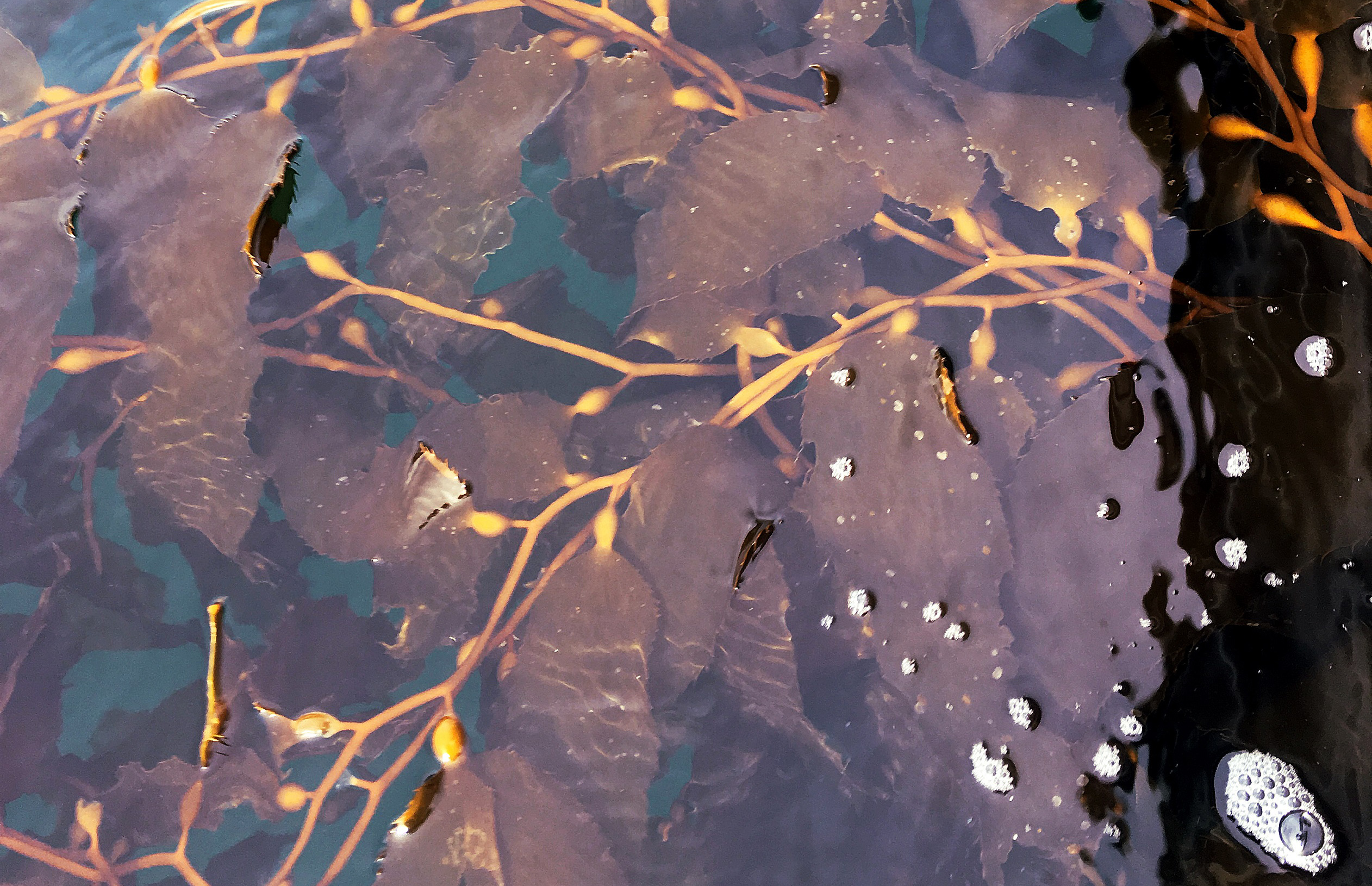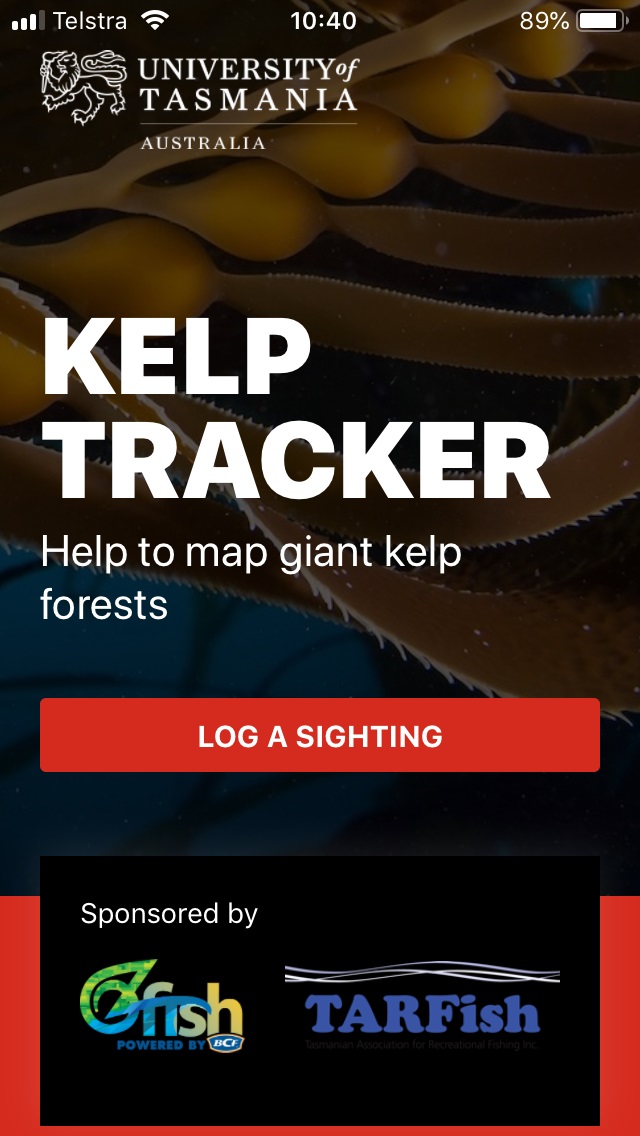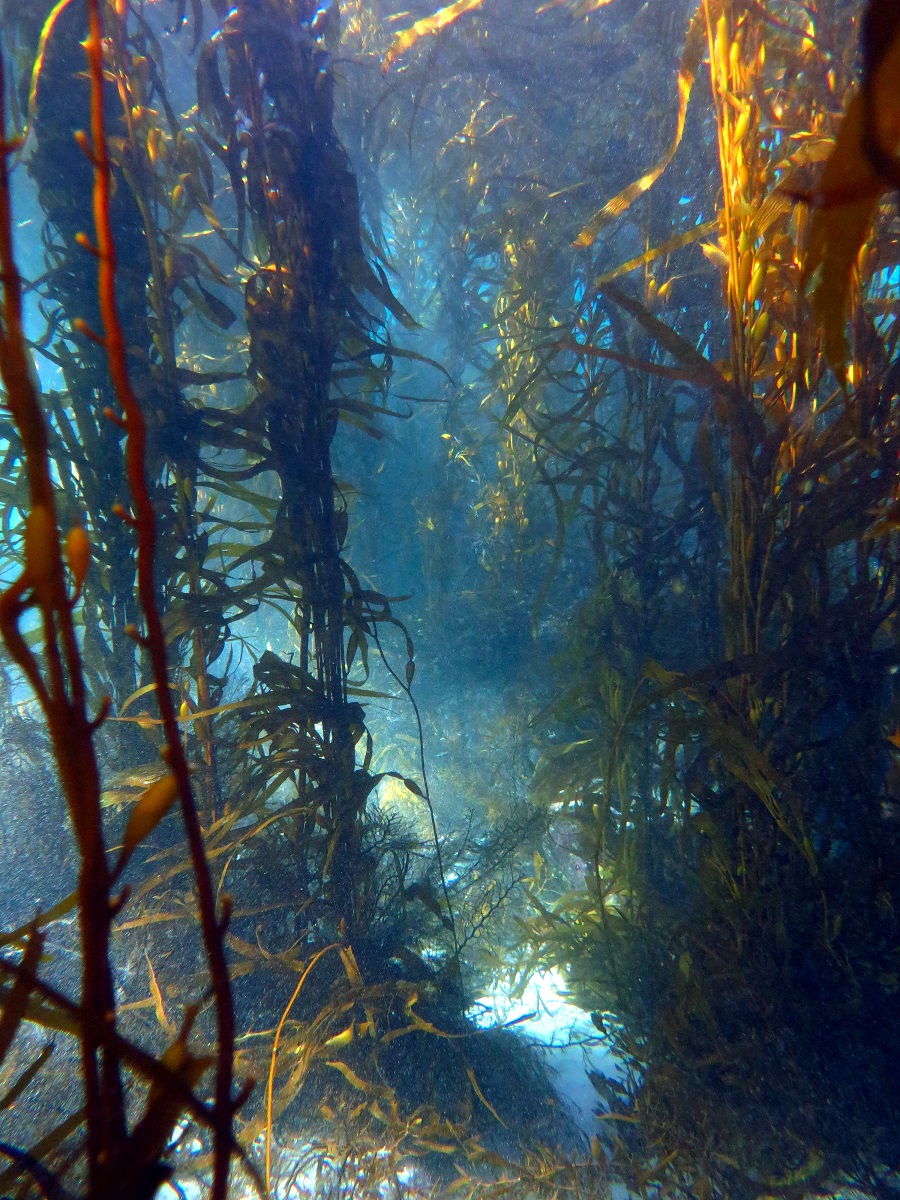
Scientists working to restore Tasmania’s disappearing giant kelp forests are enlisting the help of recreational fishers and waterway users to log sightings of remnant giant kelp via a new phone app.
The free Kelp Tracker app was developed by a Hobart-based company in partnership with scientists from IMAS, and fishing organisations OzFish Unlimited and the Tasmanian Association for Recreational Fishing (TARFish), and with support from BCF Boating Camping and Fishing, and The Climate Foundation.
The app enables users of Tasmania’s waterways to easily and quickly report when and where they spot giant kelp, with sightings then verified by IMAS kelp scientists. (Images, credit Cayne Layton)
 Over time this ‘citizen science’ data will help to create a map of the remaining underwater forests and will also help an IMAS-led research project working to restore Tasmania’s giant kelp forests to identify remnant patches that may be better adapted to warmer sea temperatures.
Over time this ‘citizen science’ data will help to create a map of the remaining underwater forests and will also help an IMAS-led research project working to restore Tasmania’s giant kelp forests to identify remnant patches that may be better adapted to warmer sea temperatures.
Professor Craig Johnson, who co-leads the project, said more than 95 per cent of giant kelp forests in eastern Tasmania had disappeared in recent decades due to the impact of warming seawater as the climate changes.
“The decline of our giant kelp forests is associated with warm and nutrient-poor waters brought to Tasmania’s East Coast by the East Australian Current,” Professor Johnson said.
“Giant kelp create complex habitats that support numerous species of economic and conservation importance, including weedy seadragons, rock lobsters and abalone, and their decline has seen giant kelp forests nationally listed as an endangered marine community.
“Scattered individuals and patches of giant kelp still survive, but there are few records of their locations, making it difficult to for us sample the remaining forests and track their further decline or growth over time,” Professor Johnson said.
 Co-project lead Dr Cayne Layton said waterway users can recognise giant kelp by its large wide leaves with air bladders at their base, stringy central stalk or stalks, and floating canopy.
Co-project lead Dr Cayne Layton said waterway users can recognise giant kelp by its large wide leaves with air bladders at their base, stringy central stalk or stalks, and floating canopy.
“By harnessing local knowledge and observations from fishers and other waterway users in Tasmania (as well as Victoria and South Australia, where some giant kelp also remains) we hope to locate and study the remnant kelp,” Dr Layton said.
“These remnant patches of giant kelp might harbour individuals more tolerant of warm water, which could then be used to grow giant kelp that are better adapted to Tasmania’s warming coastal waters.
“We will also use the data from the app to locate areas that might be suitable for habitat restoration,” Dr Layton said.
Dr Layton said any large floating seaweed canopy is likely to be giant kelp, although other species of large brown seaweed can sometimes float after becoming detached. Giant kelp can also be detected on a fish-finder or sounder, appearing as thin vertical shadows rising through the water column.
The free Kelp Tracker app can be downloaded for Apple and Android devices.
The kelp restoration project is being carried out in partnership with The Climate Foundationand the Australia Government’s National Environmental Science Program Marine Biodiversity Hub, along with OzFish Unlimited and Huon Aquaculture.